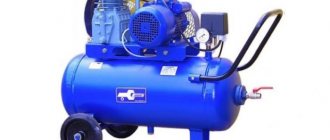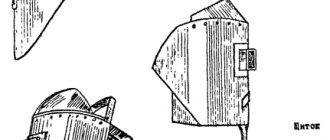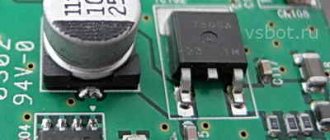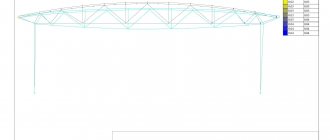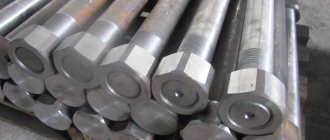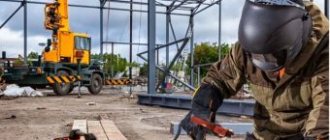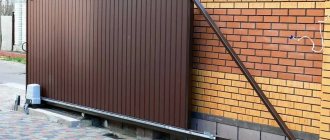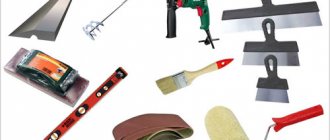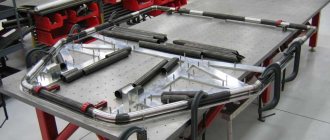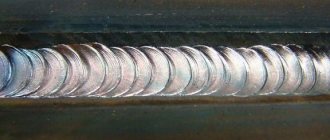Installation or assembly of metal structures is a complex production process. The strength and quality of the future structure depends on how competently this work is done. This ensures the safety of the people who will use it. The complexity of installation is determined by the type of structure, its size and purpose.
In most cases, such work is carried out by specially trained people. They have both theoretical knowledge, which helps to take into account all the requirements and rules, and practical skills, thanks to which the installation of metal structures is carried out quickly and efficiently.
Kinds
Metal structures of various types are used everywhere in construction. With their help, warehouses, shopping centers, sports facilities, residential buildings, etc. are built. The choice of design is determined by the purpose of the building, its size, climatic zone and other factors.
In this regard, a clear classification is needed that would help to quickly and correctly select the appropriate metal structure. One of the separation criteria is the assembly method and the technologies used. In accordance with it, the following types are distinguished:
- bolted;
- riveted;
- forged;
- welded;
- stamped;
- combined.
If we talk about the method of using metal structures, then in this case they are divided into:
- Prefabricated - assembled on site, and, if necessary, disassembled and transported to another location for reassembly.
- Stationary (solid) - created for long-term one-time use. They can only be dismantled using scrap.
- Transformable - used repeatedly, like collapsible ones. At the same time, different types of objects can be assembled from one structure.
These are just the main types. There are many others, each with its own characteristics. You need to know them in order to install metal structures correctly.
In principle, there is a set of Construction Norms and Rules (SNiP) developed by authorities for construction. Any facilities must be built in accordance with SNiP. However, ensuring that a building under construction complies with these standards is not so easy if there is no experience and a sufficient amount of knowledge. Therefore, it is better to delegate the installation to a construction company. This allows you to avoid unnecessary expenses and complete the work as quickly as possible in compliance with all rules.
Assembly as an important part of metal structures manufacturing technology
As noted above, the technology for manufacturing metal structures includes several stages. Assembly is by no means the least important. It can be produced by welding, gluing and using bolts or rivets.
Let's take a closer look at each of the methods.
- Welding is performed by actively heating the material until the edges of the elements begin to melt along the joint line (welding edge). When using an electric arc welding machine, the electrode melts - it is this that ensures the adhesion of the parts. In addition to electric arc welding, gas welding (using inert gases) or spot welding can be used (when the parts to be joined are pressed as tightly as possible to each other, and an electric pulse is passed through the joint line).
- Gluing is performed using special adhesive compositions that allow parts to be soldered together at the molecular level. Today, this technology for manufacturing metal structures is considered one of the most reliable.
- Assembly using bolts and rivets refers to mechanical methods of connecting structural parts. Rivets are most often used in cases where the object is expected to be subject to vibration during operation. Nuts and bolts are not suitable in this case, since their fastenings may become loose under the dynamic movement of the structure.
The most important condition for the manufacture and release of metal structures (regardless of their type and method of operation) is quality control at each stage of processing.
Preparation
A tremendous amount of work will have to be done before installation. It is necessary to provide power supply to the assembly site, bring a crane, install mobile warehouses, rails and much more. If work will take place at a height of more than 5 meters, then railings, cradles and temporary platforms will be installed at the top.
All this is necessary for the safety of workers and those people who will be in the construction area or nearby. After the preparatory work, installation will be carried out faster and without downtime.
At the next stage, it is necessary to carry out slinging, that is, lift the metal structures and install them in the correct position according to the project. Such work is performed by a person who is a slinger by profession. This is quite a traumatic job that can lead to severe injuries and death if it is performed by a non-professional.
In parallel, ground training is carried out. Installation of metal structures begins only after acceptance of the foundation. The accuracy of the construction of the building and its evenness depend on how correctly it is laid.
The surface may have some errors. They are called permissible deviations. But in any case, calculations and measurements are carried out using geodetic equipment. The obtained data must comply with SNiP.
Quality control of metal structures manufacturing
Any plant manufacturing metal structures can establish its own rules and enshrine them in internal orders or acts. However, product quality control occurs on the basis of certain regulatory and technical documentation.
VT-metall offers services:
The check involves several stages:
1. Incoming control.
The main and auxiliary materials arriving at the warehouse are assessed for subsequent use in the manufacture of metal structures. Checked:
- accompanying documents;
- appearance of materials;
- metal quality using ultrasound;
- grades, classes and grades of steel, compliance with their geometric characteristics;
- consumables and gases for welding;
- types and brands of corrosion control agents;
- classes of bolts, nuts, etc. materials.
After completion of the examination, its results are entered into a special journal for recording.
General instructions
The procedure for installing metal structures is subject to strict standards and must be carried out with an approved project. Each stage of work is supervised by the appropriate contractor who has the right to carry out construction.
Both manual force and mechanical means are used to assemble structures. Technology and equipment must be selected taking into account the characteristics of the climatic zone. Installation can also be carried out in winter at sub-zero temperatures. However, not every car can withstand frost. This factor must be taken into account so that work does not have to be curtailed in the middle, waiting for warming.
Each stage is recorded in a work log with a note about the scope of work, cost and responsible persons. This reduces the risk of errors.
Project development
All work on the creation of metal structures begins with a technical specification, which the customer transfers to the contractor.
- The terms of reference must include:
- dimensions of the building for which the frame will be made;
- building layout;
- characteristics of the soil on which the building will be located.
It is also necessary to calculate the impact of wind and precipitation on the future structure. Based on this data, designers create a structure layout diagram, identifying the parts that will experience maximum loads. Then a specification of the metal is carried out, which indicates the requirements for its grade, properties, manufacturing technology and other parameters that will allow the structure to perform its functions. Having summarized all the data, taking into account the requirements of norms and regulations, engineers make drawings of future structures.
Installation of columns
They are usually placed on a solid concrete foundation. They are secured with anchors, the foundation surface or support sheets. If the column is small (up to 10 m) and has wide shoes, bolts alone are sufficient. Otherwise, you will need a brace - a thin cable that is pulled to the side and secured, holding the structure in the desired position. You must adhere to the following rules:
- The braces are attached at the top until the column is raised.
- The second end of the cable is connected to the foundation (or anchor).
- The slings are removed only after the braces are fully tightened.
- The cables are removed after final fixation.
Installation with alignment is very labor-intensive and time-consuming. The calculations are carried out by a surveyor. However, it is also possible to carry out calibration-free assembly, which allows you to do everything faster without sacrificing quality. In this case, these technological techniques will help:
- Manufacturing the shoe and base plate separately.
- Machining the ends of columns with a milling cutter.
- Planing base plates.
- Using 4 strips with holes for bolts (the strips are welded to the plate).
- Applying axial marks on column branches.
Non-alignment installation involves the use of steel plates as supports. But the foundation should initially be lower by about 50-60 mm. The support is secured with adjusting bolts, and the axial marks on the column branches are aligned with the marks on the slab. This allows everything to be done accurately without reconciliation. Afterwards you can secure the column with anchors.
Technologies for combating corrosion in the manufacture of metal structures
Methods for preventing and eliminating corrosion belong to a separate category of technologies for the manufacture of metal structures, since this step cannot be skipped during operation, repair and maintenance of the facility.
The following methods of combating oxidation and deterioration of metal are distinguished:
- Avoiding contact of metal elements with water. This method is applicable only in cases where there is no restriction on the functionality of the object. The decision to use it must be made on a case-by-case basis.
- Adding to the alloy from which the metal structure is made, chemical elements that are primarily affected by water. Such elements are more resistant to corrosion than metal, which gives the structure as a whole a significant margin of safety.
- Application of water-repellent agents (paint, varnish, epoxy compounds, etc.) to the structure. The presence of a hydrophilic layer prevents direct contact of the metal with water, which protects parts from corrosion. As a rule, such products are applied to already assembled objects.
- Bimetal. This technology for the manufacture of metal structures involves the use of an alloy of two metals as a material, one of which is more vulnerable to corrosion, and the other less (for example, steel and chromium/aluminium/zinc). This measure of protecting the structure from oxidation is applied even at the procurement stage, but the output is a durable part with improved characteristics.
The use of anti-corrosion measures significantly increases the service life of the facility, and timely maintenance of metal structures extends it doubly.
Truss installation
The main problem when installing trusses is their high flexibility. Because of this, the structure becomes more mobile, and therefore vulnerable when lifted and secured. This element consists of thin rods. To reduce their mobility and deformation, they are reinforced with rods. After this, the slings are attached to 2 or 4 points of the upper belt. Additional elements will take the weight of the structure from the attachment points. It is impossible to grasp the slings simply by the supporting parts without reinforcement.
Columns are installed first, then trusses. The first of them is secured with braces, and the subsequent ones - with spatial connections to the previous one. Reinforced concrete slabs are laid transversely. Thanks to this, a hard disk is formed along the top of the trusses and their final fixation.
When is welding required?
Welding work allows you to quickly restore parts while maintaining their strength. Many manipulations can be carried out without disassembling and unscrewing threaded connections, which can become sour over time. Using welding, you can quickly restore a part and do not have to wait for a spare part from the store. This is very convenient, because the equipment does not stand idle and quickly returns to work.
Welding work is carried out in the following cases:
- presence of traces of deep corrosion on parts;
- cracks in metal structures, signs of deformation;
- Additional upgrades are being carried out, for example, fasteners for a winch or attachments;
- scheduled repairs are required to eliminate defects in the body or metal structures.
It is better to entrust welding work to professionals - the master will perform high-quality welding without oxide and slag, which allows you to achieve high strength and rigidity of the structure. For additional protection against corrosion, the metal is treated with polymer paint.
Installation of crane beams
The crane beam, installed along axial risks, is equipped with a rail and rests on columns. It is necessary for the safe movement of the crane. Installation is carried out after the installation of two columns. To hold the beam in the desired position, guy ropes are placed on it on both sides. Slingers pull on them, adjusting the horizontal position of the element. Anchors are used to temporarily secure the structure.
The beams are lifted slowly and carefully. It is unacceptable for them to sway or touch the columns. Reception is carried out by construction workers at height. No alignment is required - axial marks are sufficient.
In fact, there are a lot of nuances that an installer needs to know when installing a crane beam. So, the holes for the bolts should be slightly larger in diameter than the bolts. This makes it possible to subsequently straighten the position of the beam.
Prices for welding work
Today, metal structures are actively used in construction. Therefore, the question of the price of welding for work when installing metal structures is very important for many.
| Name | Unit | Price |
| Prefabricated hangar | m 2 | from 6,000 rub. |
| Prefabricated warehouse | m 2 | from 6,000 rub. |
| Manufacturing of metal structures | T | from 65,000 rub. |
| Hangars made of metal structures | m 2 | from 6,000 rub. |
| Prefabricated buildings made of metal structures | m 2 | from 9,500 rub. |
| Construction from metal structures | m 2 | from 6,000 rub. |
| Buildings made of metal structures | m 2 | from 9,500 rub. |
| Public building structures | kg | 65,000 - 75,000 rub. |
| Structures of industrial buildings (including crane tracks) | kg | 70,000 - 85,000 rub. |
| Agricultural building structures | kg | 62,000 - 75,000 rub. |
| Supports, platforms, stairs, grillages, auxiliary structures | kg | 85,000 - 115,000 rub. |
| Silos and bunkers | kg | 65,000 - 120,000 rub. |
| Tanks and pressure vessels | kg | 80,000 - 150,000 rub. |
| Embedded products | kg | 50,000 - 150,000 rub. |
| Steel trusses | T | from 20,000 rub. |
| Columns | T | from 20,000 rub. |
| Building frames and structures | T | from 42,000 rub. |
| Containers for liquids and bulk materials | T | from 63,000 rub. |
| Metal shelving | T | from 5,000 rub. |
| Walling | linear meter | from 1,500 rub. |
| Gate frames | linear meter | from 1,000 rub. |
| Pipeline supports | T | from 53,000 rub. |
| Frames for stairs | linear meter | from 1,000 rub. |
| Roller conveyors | units | from 13,000 rub. |
| Overpasses | units | from 6,500 rub. |
| Bunks for semi-trailers | units | from 18,500 rub. |
| Bicycle parking | units | from 1,500 rub. |
| Steel formwork for foundation | units | from 4500 rub. |
| Wheel chocks for parking lots | units | from 1,000 rub. |
| Canopies and canopies | units | from 30,000 rub. |
| Metal pallets | units | from 3,500 rub. |
| KMD development | ||
| Buildings and structures up to 30 tons | kg | 1,500 - 3,000 rub. |
| Buildings and structures 30-300 tons | kg | 1,000 - 1,200 rub. |
| Buildings and structures from 300 tons | kg | 800 - 1,000 rub. |
| Installation | ||
| Installation of metal structures | T | from 17,500 rub. |
| Manufacturing and installation of metal structures | T | from 65,000 rub. |
| Installation of fences and fences | linear m. | from 950 rub. |
| Installation of building cladding with corrugated sheets | m 2 | from 300 - 400 rub. |
| Installation of building cladding with sandwich panels | m 2 | from 400 - 900 rub. |
| Installation of shaped elements | linear m. | from 180 rub. |
| Gate installation | PC. | from 13,500 rub. |
| Construction of a reinforced concrete slab | m 3 | from 3,500 rub. |
| Construction of the floor slab | m 3 | from 3,700 rub. |
| Foundation work | m 3 | under contract |
| Cleaning of metal structures | ||
| Surface preparation degree St2 according to ISO 8501-1 | kg | 1,000 rub. |
| Surface preparation grade Sa2 according to ISO 8501-1 | kg | 2,500 - 4,000 rub. |
